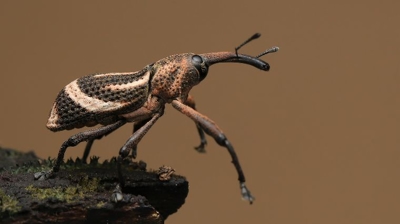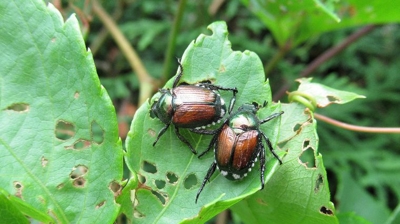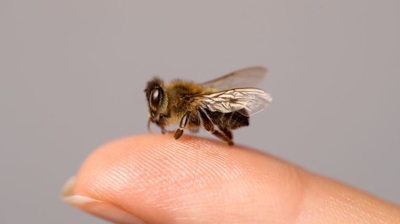
Snakes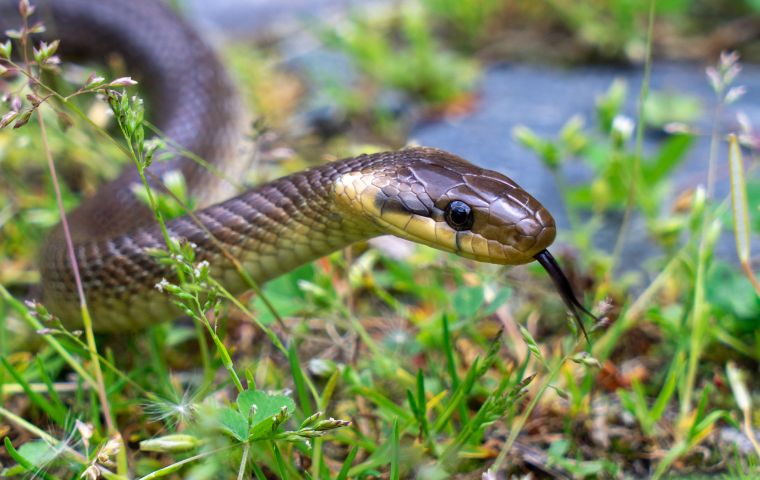
What Are Snakes?
Snakes are fascinating and diverse creatures that belong to the suborder Serpentes within the reptile class. They can be found on every continent except Antarctica and inhabit a wide range of ecosystems, from rainforests to deserts. Here's a more comprehensive overview of snakes:
Are Snakes Harmful?
Snakes can be considered harmful in several ways, depending on the species and the context in which they are encountered. The primary dangers associated with snakes fall into a few categories, such as venomous bites, physical harm, environmental impacts, and potential psychological effects. Below are the key ways in which snakes might be harmful:
Venomous Bites
Some snakes are venomous, meaning they inject toxins into their prey or threats through specialized fangs. Venomous snakes can cause significant harm to humans, including:
- Death: In severe cases, if untreated, venomous bites can lead to death. This is more common in regions where antivenom is not readily available or if the victim doesn’t receive timely medical attention.
- Tissue Damage: Snake venom can cause severe tissue damage around the bite site. This might result in necrosis, requiring surgical intervention or amputation in extreme cases.
- Systemic Effects: Venom can cause symptoms such as paralysis, internal bleeding, kidney failure, or shock, which can be fatal without prompt treatment.
Physical Injury
Even non-venomous snakes can pose physical risks to humans. Large snakes, such as pythons or boas, can pose a danger through constriction. These snakes wrap around their prey or threat and squeeze until the prey is incapacitated. In rare cases, large constrictors may attack humans if they feel threatened or are in captivity. The injuries from constriction can include:
- Crushing Injuries: The pressure from a constricting snake can cause broken bones, bruising, and damage to internal organs.
- Suffocation: In extreme cases, constriction can lead to suffocation or strangulation, especially with large species.
Disease Transmission
Snakes are known to harbor certain diseases that can be transmitted to humans, either through direct contact or via their environment. Some of these diseases include:
- Salmonella: Many snakes carry salmonella bacteria, which can be transmitted to humans through handling them or coming into contact with their feces. Ingestion of the bacteria can lead to gastrointestinal issues like diarrhea and fever.
- Parasites: Snakes can host various parasites, including ticks and mites, which could be transmitted to humans indirectly.
Human-Wildlife Conflict
In areas where human populations live in proximity to natural habitats, snake encounters can lead to conflict:
- Attacks on Humans: When snakes feel threatened or cornered, they may strike defensively. This is particularly common in populated areas where snakes lose their natural fear of humans.
- Damage to Property: Snakes can sometimes cause damage to homes or other structures while seeking shelter or food.
Psychological Harm
- Fear and Anxiety: Many people suffer from ophidiophobia (fear of snakes). The mere presence of snakes can cause extreme anxiety, panic attacks, and distress. This fear can also affect people's behavior in regions where snakes are common, leading to avoidance of natural areas or certain activities, which could limit their quality of life.
- Cultural Impact: In some cultures, snakes are seen as omens or symbols of evil, leading to stigmatization and fear that may not be based on actual threat but rather on cultural perceptions.
Agricultural and Infrastructure Damage
Some snakes can pose a threat to crops or infrastructure:
- Damage to Crops: Certain snake species may create burrows or nests in agricultural areas, potentially damaging crops or irrigation systems.
- Damage to Buildings: Snakes may find their way into buildings, causing damage to insulation, electrical wiring, and other infrastructure elements.
While snakes play a crucial ecological role in controlling pest populations and maintaining balanced ecosystems, certain species can pose significant risks to humans and animals. Whether through venomous bites, physical harm, or the indirect impact of disease and ecological disruption, snakes can indeed be considered harmful in various contexts. However, many of these risks can be mitigated through education, preventative measures, and prompt medical treatment in case of an encounter with a dangerous snake.
Types of Snakes
In the United States, there are several types of snakes that are commonly encountered due to the country's diverse geography and range of ecosystems. Some of the most frequently encountered snake species in the United States include:
- Bullsnake (Pituophis catenifer): Bullsnakes are large, non-venomous snakes found in various regions of the United States. They are known for their resemblance to rattlesnakes and their ability to mimic rattling sounds.
- Copperhead (Agkistrodon contortrix): Copperheads are venomous pit vipers found in the eastern and southeastern regions of the United States. They are known for their copper-colored heads and often inhabit wooded areas.
- Cottonmouth (Agkistrodon piscivorus): Also known as water moccasins, cottonmouths are venomous pit vipers found in the southeastern United States. They are often associated with aquatic habitats and are known for their white mouths.
- Garter Snakes (Thamnophis spp.): Garter snakes are small to medium-sized, non-venomous snakes known for their distinctive longitudinal stripes. They are found throughout most of the United States and are often seen in gardens and near water sources.
- Eastern Ratsnake (Pantherophis alleghaniensis): Also known as the black rat snake, these non-venomous snakes are found in the eastern and central parts of the country. They are often encountered in wooded areas and around buildings and barns.
- Western Diamondback Rattlesnake (Crotalus atrox): Found in the southwestern United States, this venomous snake is one of the most well-known rattlesnake species. It gets its name from the diamond-shaped pattern on its back and its distinctive rattling tail.
- Timber Rattlesnake (Crotalus horridus): These venomous rattlesnakes are found in the eastern United States and are known for their distinctive rattling sound. They inhabit forests and wooded areas.
- Eastern Coral Snake (Micrurus fulvius): The eastern coral snake is a venomous species found in the southeastern United States. It has vibrant red, yellow, and black bands and is known for its potent venom.
- Ring-necked Snake (Diadophis punctatus): These small, non-venomous snakes are found in various parts of the United States and are known for the distinct yellow or orange ring around their necks.
- Corn Snake (Pantherophis guttatus): Corn snakes are non-venomous constrictors found in the southeastern United States. They are popular in the pet trade due to their attractive colors and patterns.
These are just a few examples of the snake species commonly encountered in the United States. It's essential to exercise caution and respect when encountering snakes, as some can be venomous. If you encounter a snake in the wild, it's best to observe from a safe distance and avoid provoking or handling it.
Snake Appearance
Snakes display a wide range of appearances due to their incredible diversity, with various species exhibiting distinct features. However, there are some general characteristics that most snakes share. Here is a more detailed description of what snakes typically look like:
- Body Shape and Size: Snakes are elongated reptiles with a cylindrical or slightly flattened body shape. Their bodies lack limbs, which distinguishes them from other reptiles. The length and girth of snakes can vary significantly among species, ranging from a few inches to over 30 feet in extreme cases.
- Scales: The skin of snakes is covered in scales, which are typically smooth and overlapping. These scales serve multiple functions, including protection, reducing water loss, and aiding in movement. The coloration and pattern of scales can vary widely, depending on the species and its habitat.
- Head: Snakes have distinct heads that are separated from their bodies by a narrow neck. The shape of the head can vary, with venomous snakes often having more triangular-shaped heads, while non-venomous snakes tend to have more rounded heads. The head houses various sensory organs, including eyes, nostrils, and a forked tongue.
- Eyes: Snakes have lidless eyes covered by a transparent scale. They come in different shapes and sizes but generally have good vision in low light conditions. Some species, like pit vipers, have heat-sensing pits near their eyes, allowing them to detect warm-blooded prey.
- Nostrils: Located on the sides of the head, snakes have nostrils that they use for breathing and detecting scent particles in the air. They use their flickering tongue to collect these particles and analyze them using the Jacobson's organ (vomeronasal organ) in the roof of their mouths.
- Mouth and Fangs: Snakes possess a hinged jaw that allows them to swallow prey whole, even if it's larger than their head. Venomous snakes have specialized fangs that deliver venom to immobilize or kill their prey. These fangs can vary in size and location depending on the species.
- Coloration and Patterns: Snake coloration and patterns vary widely and often serve as camouflage or warning signals. Some snakes are brightly colored with striking patterns, while others have cryptic coloration to blend into their surroundings. Mimicry of dangerous or venomous species is also common.
- Belly Scales: The scales on a snake's belly are typically smoother and wider than those on its back. These ventral scales help the snake grip surfaces while moving and play a role in thermoregulation.
There is immense variation among snake species, and specific characteristics may differ. Additionally, juvenile snakes may have different colors and patterns compared to adults, making snake identification a nuanced skill for herpetologists and enthusiasts.
Learn more: What Do Snake Eggs Look Like?
Learn more: What Do Snake Droppings Look Like?
Snake Habitats
The likelihood of encountering snakes depends largely on the region in which you live, the type of habitat you frequent, and the season. Snakes are found all over the world, but the specific environments where you're most likely to come across them include a variety of natural and man-made settings. Here’s a detailed breakdown of where you're most likely to encounter snakes:
Habitats
Snakes tend to thrive in particular habitats where they can find food, shelter, and appropriate conditions for survival. Some of the most common habitats where snake encounters are frequent include:
- Woodlands and Forests: Dense woods or forests, especially those with a lot of underbrush and fallen leaves, are common places to encounter snakes. They provide a cool, shaded environment and ample hiding spots.
- Grasslands and Meadows: These open, grassy areas are ideal for many species of snakes, particularly those that hunt small rodents. Some species prefer tall grasses, where they can easily hide and hunt.
- Deserts: Desert environments can be home to a wide variety of snakes, especially venomous species like rattlesnakes. These snakes often seek shelter under rocks or in burrows during the hottest parts of the day.
- Wetlands, Marshes, and Swamps: Snakes like water moccasins and some species of water snakes are commonly found in wetlands. These areas offer abundant water and prey, making them ideal environments for aquatic or semi-aquatic snakes.
- Rocky Areas and Hillsides: Many snakes, particularly those that live in dry, rocky environments, prefer rocky outcroppings and hillsides. They often use the cracks and crevices in rocks for shelter and hunting.
Near Water Sources
- Rivers, Streams, and Lakes: Many species of snakes, such as water snakes, cottonmouths, and others, prefer habitats near bodies of water. They hunt for fish, amphibians, and small mammals that live near or in the water.
- Flooded Areas: After heavy rains or floods, snakes may move into urban or residential areas as their natural habitats become submerged. This can increase the likelihood of encounters in areas that are not typically home to snakes.
Residential and Urban Areas
While snakes are primarily associated with natural environments, certain situations may lead them into urban or residential spaces:
- Yards and Gardens: Gardens, particularly those with tall grass, bushes, or areas with dense foliage, can attract snakes. Snakes may enter yards in search of food, such as rodents, amphibians, or insects.
- Basements and Crawl Spaces: Snakes may find their way into homes, especially through openings in walls, windows, or doorways. Basements and crawl spaces provide cool, dark environments that can serve as hiding places.
- Near Woodpiles or Sheds: Woodpiles, sheds, and other outdoor storage areas provide excellent hiding spots for snakes, especially in colder climates where they may seek warmth or shelter.
- In and Around Farms or Agricultural Areas: Farms or agricultural areas often have fields and barns that are home to rodents, which attract snakes. Additionally, irrigation systems and irrigation ditches may draw water-loving species.
Specific Geographic Regions
The types of snakes you might encounter also depend on where you are located. Some regions have higher concentrations of snakes than others. Here are a few examples:
- Tropical and Subtropical Regions: In regions like parts of South America, Southeast Asia, and Africa, snake encounters are more common due to the abundance of diverse species. These areas are home to both venomous and non-venomous snakes.
- Temperate Regions: In North America, parts of Europe, and Asia, snakes like garter snakes, rattlesnakes, and vipers are commonly encountered in rural or suburban areas, especially near forests, fields, or streams.
- Desert Regions: In the southwestern United States, parts of Australia, and parts of Africa, deserts can be home to many species of venomous snakes, such as rattlesnakes, cobras, and vipers.
- Island Regions: Islands like the Caribbean or certain Pacific islands are home to unique and sometimes dangerous snake species. For example, some islands in the Pacific and Indian Oceans host sea snakes or specific venomous species.
Human-Constructed Areas
Snakes can sometimes be found in human-built areas, especially if they provide shelter or food:
- Agricultural Fields: As mentioned earlier, snakes may be drawn to areas where food is abundant, like crops that attract rodents.
- Construction Sites: Areas under construction or where ground is being disturbed may expose snakes to new environments, and they could seek shelter in building materials or temporary structures.
- Roadways: Roads, especially those that cut through forests, fields, or deserts, can be places where snakes are seen as they cross from one side to another. Roads also tend to warm up in the sun, which can attract snakes in cooler weather.
The most likely places to encounter snakes are in areas that offer the essential elements they need to survive: food, water, and shelter. Woodlands, forests, grasslands, wetlands, and rocky environments are prime habitats for snakes. Additionally, snakes are drawn to areas with abundant prey, such as agricultural fields, gardens, and near water sources. Urban areas can also experience occasional snake encounters, particularly in yards, gardens, and basements, but these are typically more common in rural or suburban settings. Understanding where snakes live and how to avoid them can help reduce the likelihood of an unwanted encounter.
Snake Diet
Snakes are carnivorous reptiles with a wide-ranging diet, primarily consisting of other animals. Their choice of prey depends on factors such as the snake's size, habitat, and hunting methods. Here's a comprehensive overview of what snakes eat:
- Rodents: Many snake species, especially those in North America, feed primarily on rodents such as mice, rats, voles, and squirrels. This category includes both venomous and non-venomous snakes.
- Birds: Some snakes are skilled climbers and specialize in hunting birds. They may ambush birds at nests or capture them in trees or bushes. Bird eggs are also on the menu for certain snake species.
- Amphibians: Snakes consume various amphibians, including frogs, toads, and salamanders. These prey items are often found near water sources, making them accessible to snakes.
- Insects: Smaller snake species, like garter snakes, may consume insects and other invertebrates. They use their keen sense of smell to locate prey.
- Fish: Aquatic snakes, such as water snakes and sea snakes, primarily feed on fish. They are adapted to swimming and hunting underwater and may use venom to immobilize their aquatic prey.
- Other Reptiles: Some snakes feed on other reptiles, including lizards and other snakes. King snakes, for example, are known for consuming other snakes, including venomous ones.
- Mammals: Larger snake species, such as pythons and boas, have the ability to take down larger mammals like deer, pigs, and monkeys. These snakes use constriction to subdue their prey.
- Eggs: Snakes may raid bird nests or reptile nests to consume eggs. They may swallow the eggs whole and rely on their digestive enzymes to break down the eggshell.
- Unusual Prey: Some snake species have unique diets. For instance, the African egg-eating snake specializes in consuming bird eggs, while the tentacled snake in Southeast Asia feeds on fish using a unique hunting method involving specialized appendages.
- Carrion: Occasionally, snakes scavenge carcasses of animals that have already died. They can digest decaying flesh, which may provide them with sustenance when live prey is scarce.
The specific diet of a snake depends on its species and geographical location. Venomous snakes use their venom to immobilize or kill prey, while non-venomous snakes typically rely on constriction or other methods to subdue their meals. The size and age of the snake also influence the size of prey it can consume. Snakes have evolved to be highly specialized hunters, with their choice of prey often dictated by their anatomy and hunting strategies.
Learn more: What Do Snakes Eat?
Snake Life Cycle
The life cycle of snakes is a fascinating journey that includes several key stages, from birth or hatching to adulthood. Here is a more detailed overview of the life cycle of snakes:
- Birth or Hatching: The life cycle begins with either the birth of live young or the hatching of eggs, depending on whether the snake species is viviparous (live-bearing) or oviparous (egg-laying). In viviparous species, female snakes give birth to live offspring. These snakes nourish their developing embryos internally through a placenta-like structure, and the young are born fully developed and capable of fending for themselves. Oviparous species lay eggs, which may be deposited in underground burrows, rotting vegetation, or other suitable locations. The female typically abandons the eggs after laying them, and the young snakes hatch from the eggs once they have developed sufficiently.
- Juvenile Stage: After birth or hatching, young snakes are known as juveniles. They are often more vibrant in coloration than adults and may have distinct patterns. Juveniles are vulnerable and tend to hide from potential predators while growing and learning to hunt for food.
- Growth and Development: As snakes grow, they shed their skin periodically through a process called ecdysis. This shedding allows them to accommodate their increasing size. The frequency of shedding varies among species and individuals, with younger snakes shedding more often than adults.
- Feeding and Hunting: Juvenile snakes start their lives by feeding on smaller prey items, such as insects, amphibians, or small rodents. As they grow, their diet expands to include larger prey. Venomous snakes begin to develop venom and hunting techniques during this stage.
- Maturity: Snakes reach sexual maturity at different ages, depending on their species. Some may become sexually mature within a few years, while others may take several years or even decades. Maturity is marked by physical and behavioral changes, including the ability to reproduce.
- Reproduction: Adult snakes engage in mating rituals and reproduce to continue their species. Mating behavior varies widely among species and can involve courtship displays, combat between males, or other interactions. After successful mating, females of oviparous species lay eggs, while viviparous species carry embryos to term.
- Parental Care: In the case of egg-laying species, parental care usually ends with the laying of eggs. The female does not provide any further care to the eggs or hatchlings. In viviparous species, females provide care by nourishing the developing embryos internally.
- Lifespan: The lifespan of snakes varies greatly depending on factors such as species, habitat, and predation risk. Some snakes may live for only a few years, while others, particularly large constrictors, can live for several decades.
- Aging and Senescence: Like all organisms, snakes eventually experience aging and senescence, characterized by a decline in physical condition and reproductive ability. Aging snakes may become less active and may exhibit signs of age-related health issues.
While this life cycle provides a general overview, there is considerable variation among snake species in terms of reproductive strategies, growth rates, and lifespans. Additionally, snakes play crucial ecological roles in various ecosystems, helping to control prey populations and contributing to the overall balance of their habitats.
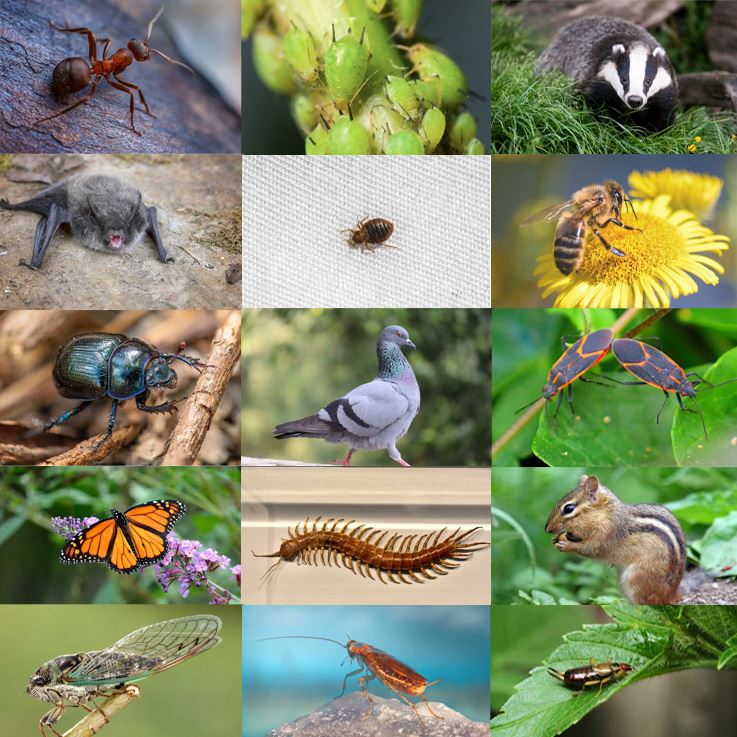

Hear From Our Happy Customers
-
"Professional & Considerate"
I’m pleased with Miche services. Jarvis came today. Professional and considerate. Thank you!
- Judy B. -
"Fantastic & Patient"
Jarvis was fantastic and patient. He answered my questions with an in-depth explanation and addressed all of my areas of concern. Would love for him to be my assigned tech going forward. Well done!
- Yonnette M. -
"Wonderful Service"
Wonderful service. Jarvis is great. Took care of everything I needed. Thank you!
- Henry P. -
"Great Communication"
Tech was on time, communication was great, and he accommodated my needs.
- Alonzo W. -
"Very Knowledgeable"
The tech that arrived was courteous, professional, and very knowledgeable. He was Great.
- Uerial I. -
"Exceeds Expectations"
I can’t say enough positive things about this company... The tech that came out, Jarvis went above and beyond my expectations. Thank you guys, I will continue using your services.
- Jake M.

